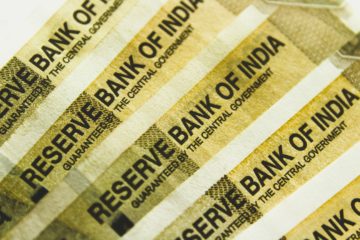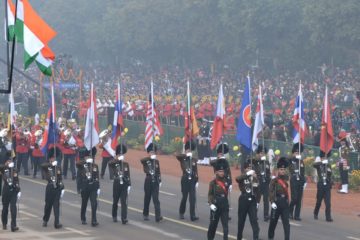History of Partition of India
Contents
India’s struggle for independence for around 150 years came to an end on August 15, 1947, but the country wasn’t the same which our national leaders had desired for. The atrocious act of partitioning India into two nations was committed by the outgoing Britishers. In this article, we will skim around the development which led to the most draconian point in Indian history.
Disclaimer: Opinions in the article are non-personal rather they are just a prose on the interpretation made by eminent, non-partisan historians on the happenings. Many segments of this period are a hot-debate topic till today. Ample evidence will be provided if challenged.
Sowing of the Seeds of Communalism:
Communalism is a word used for a strong sense of loyalty to the interests of one particular group rather than to society as a whole. This leads to extreme behaviour towards others. Awakening of nationalism and a sense of belongingness intensified during the end of 19th Century. National leaders and organisations began to flourish against the atrocities committed by the British. Indian National Congress(INC) was one such organisation. The British had discerned about the damage to its affairs by such uprisings by then. Episodes like the revolt of 1857, tribal uprisings, socio-religious movements etc. had cost the Britishers a fortune and they were eager to suppress these as soon as they would ripe. Religion was one pivot point which the Britishers identified which would topple this nationalism machinery. Indians fought as Indians in all the successful or near successful revolts against British till then rather than as Muslims or Hindus or any community wise. To break this, Lord Curzon, the Viceroy of India during 1900-05 experimented with the partitioning of Bengal province for a claimed ” Administrative Purpose”. The real reason was to separate Muslim population living in East Bengal from the nationalism hub of West Bengal (a Hindu majority). The East Bengal was promised better infrastructure and facilities to which they stayed mum. Curzon could easily infer that this could be the most efficient way to gag the nationalism movement. Though the Bengal partition was reverted in 1911 and the two provinces were united again, the seeds of communalism had been sown to the minds of the Indians.The reversal of partition of Bengal was mainly due to the Swaraj Movement of INC. British wanted a counter organisation to the INC & this was commissioned in the Shimla conference of 1906 where the viceroy summoned all the major leaders for apparent discussions on the future. The list of the invitees to the conference spoke the real intentions of the conference. Extremist Muslim leaders such as Sir Syed Ahmad Khan, Aga Khan, etc. who were loyal to the British were called upon as representatives of Muslim community rather than calling liberal and intellectual leaders such as Maulana Azad or Gaffar Khan. They placed a demand of reservations to Muslims in the politics for their service to the British army (which was granted in 1909). This conference gave birth to the Muslim League(ML). As Nehru said ” One Communalism doesn’t end the other, each feeds on the other and both fatten“, this formation of Muslim league led to the formation of Hindu Mahasabha and many such reactionary organisations. (Note: Jinnah, the pioneer of the Indian partition fiasco, was not a member of Muslim league yet. He was a member of Indian National Congress and a critic of Muslim league).
Thus the creation of the Muslim League, a child of British Thinktank, was the first major happening in the long course of development of communalism.
Rise and Growth of Communalism
Mohammed Ali Jinnah, an active participant of INC & Satyagraha, parted his way from the Indian National Congress after sudden withdrawal of Khilafath movement by Gandhiji, which had a bearing for the Muslim community. His entry to the Muslim League is to be seen as the epitome of communalism in India. Yet, he was not the first person to put forward the partition demand as perceived by many.
The 1930 session of ML, a poet and a political thinker – Mohammed Iqbal (same person who wrote ‘Sare Jahan Se Acha’) put forward the idea of a separate Muslim state and proposed the ‘Two-nation theory’. In 1933, Choudhary Ali gave this country a name – “Pakistan”. In 1940, Jinnah proposed the “Pakistan Resolution” stating that a separate country is the ultimate demand of the Muslim League.
What led to this rise and development of Pakistan demand was the performance of Muslim League in the provincial elections. Though established on a religious setting, Muslim League could not even gain majority in Muslim areas like Bengal, Sindh, Balochistan etc. They could not form a single Government in any of the provinces till 1937. Hence, they stuck on to the demand of a separate nation to further their agenda. According to them Muslims could never form government in India and hence a separate nation was the only way to safeguard their subjects.
Post World War II: The Climax(Post 1940)
Britishers on the allied side of the war were facing heavy defeat and were desperately wanting Indians to join the war and help them. This weak situation of Britishers ushered great opportunities for INC to place the independence demand. Here begins the cry baby politics of Muslim league. Muslim League left no opportunity to hinder the future prospects of India. The British Government in England issued a declaration stating that no transfer of power will happen until all the communities of India are in harmony with their future plans. Jinnah started to place impossible demands such as 50% reservation, Veto on every bill, etc. which would make the entire council dysfunct.
At this point, India became a costly affair for Britishers and they wanted to let go of it. Colonialism was coming to an end in the world and Britishers were facing international pressure to let go of the colonies. Deliberate attempts by the British were made to bring INC and ML to one table. They wanted to exit India by making proper arrangements for the future governments so as to not draw criticism for creating a fiasco. ML, the very own creation of British was causing the afflictions for their exit. The Muslim communal ideas were echoed by Hindi communalist who declared that Hindus too were a distinct nation & India is the land of Hindus. The Muslim League, Hindu Mahasabha, RSS, Communist Party of India did not even participate in Gandhiji’s Quit India Movement. Two nations were no longer an option but a necessity.
The Partition & the Independence
The talks between British, INC and ML had come to a standstill as neither of them was going to budge. British wanted a harmonized India without any future implications pointing to Britain, INC wanted India as a whole, ML wanted Pakistan. To make its demand louder, ML was raging riots in the whole country. Murders, rapes, robbery on each others community was a new normal. The whole country was on the verge of an unprecedented apocalypse. At this moment, Gandhiji asked the Congress to give away the ML demands and end the blood bath in the country.
Mountbatten, the last Viceroy of India was sent to wrap up British affairs in India. A boundary commission under Radcliffe was appointed to draw the new map of India. He had never visited India till that date & was given a mere 3 month time for this project. He was accompanied by one member from INC and ML each. 15th August was decided as the date of transfer of power. The new map of India was ready on 12th August 1947 but wasn’t revealed until 18th August 1947. This was done so that people celebrate their independence without any second thoughts. People on the borders assumed to be on the right side of the upcoming new countries. When the maps were released, the raging communal fire was fanned. Widescale migration of people across borders with faint ideas about their future had begun. Pakistan was given independence a day earlier as Mountbatten wanted to attend the independence ceremonies of both nations at Karachi as well as in Delhi.(Note: Transfer of power happened on the midnight of 15th August. Pakistan celebrates its independence day on 14th August)
Could the partition be avoided?
The answer is a plain Yes! The partition could have been avoided if the developments around it were identified and suppressed soon after. The developments were neither sudden nor of great weightage and hence they could have been silenced. INC failed on 2 fronts –
- They failed to bring Muslim masses into confidence. ML was represented as the sole representative of Muslims of the country by British & the INC remained silent on this.
- Failed since 1937 to stem the advancing tide of communalism. While it was busy formulating future plans for India, the idea of India itself was collapsing in the background.
- As Moulana Azad said – “We divide, they rule“, Indians failed to recognise the disaster in disguise communalism which was fed by Britishers. But could the partition be avoided in 1947? No. As Gandhiji said – “The damage was irreparable“. Enough damage had been done beyond which it was impossible to return. let’s see the options which INC had to choose from in the 1947:
- Partition or a civil war: It was seen how ML used riots to forward its demands and it could have been impossible to see Government with such a party in the future. (Note: an interim Government had been formed by British comprising of INC & ML in 1946 as a temporary measure. No developments were made in this period. ML would veto all the bills & legislations. The Government was a joke)
- Partition or Balkanisation: It is to be not forgotten that India comprised of nearly 562 princely states during independence. British had given them 3 choices – Join India, Join Pakistan, become an independent nation. INC was opposed to the 3rd option as it would create 100s of countries and making it impossible for administration and development. British were ready to accept all INC demands in return for INC agreeing to partition. As Sardar Vallabhai Patel said – “If we had not accepted the partition, India would be split into bits and pieces. We would not have one Pakistan but several.“
Hence, the partition can be seen as the bitter pill which INC had to swallow for the much-ignored disease which it had unseen. History teaches us extremely valuable lessons. Communalism is an integral part of every country’s politics where two or more fractions of people exist. Jinnah gained himself a fortune of wealth, “Father of Pakistan” title, and an everlasting legacy in Pakistan while we can see how the Pakistan as a nation has suffered & living in agony till today. If only love was as strong as hate, we would be seeing a whole new world today.
Article by Shabaz Khan
If you have topics for Mera Bharath Mahan which you would like use to write, please type them in the comments below. ✨
For more such posts, click here



2 Comments
Arjuman · July 25, 2020 at 3:56 pm
Fair information! Great job
Abul Hassan · July 25, 2020 at 6:30 pm
Authoritative and well researched article